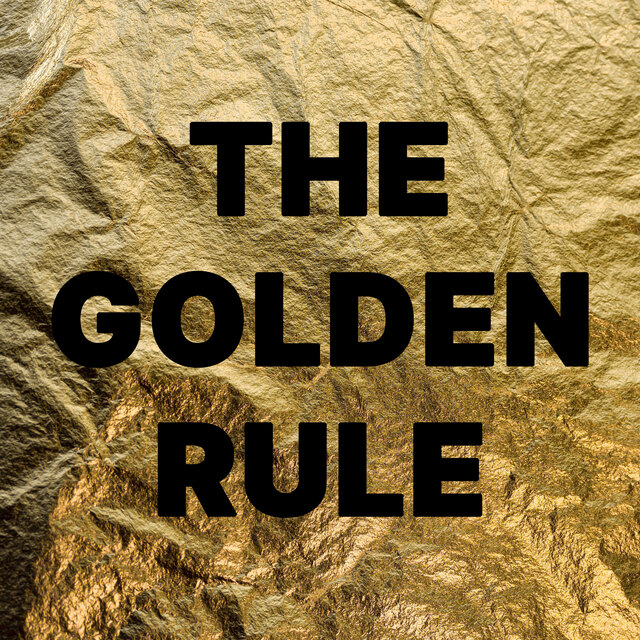The Good Brand Checklist No.9
One more thing - The Golden Rule of good branding

The final article in the Good Brand Checklist series - The Golden Rule.
The most important rule of all in branding is obvious, but needs to be remembered and pointed out (often)- particularly to marketers.
‘All the branding in the world won’t fix a bad product or service.’
So before you head off spending time, effort and money on branding and marketing, for pete’s sake, make sure your product or service is of an acceptable quality.
Only Acceptable?
Yes, that’s right. Not perfect, not the best, just acceptable
Usually acceptable is good enough. Branding can help a product/service of average or acceptable quality to succeed and make money for the brand, often at the expense of better quality products.
Don’t believe me?
History is littered with stories where, the better man lost, or the better product failed to win market share and lost out to an inferior product with better branding, better marketing or just plain luck. e.g Beta vs VHS video tapes
e.g. Microsoft vs Apple (Apple has since turned this around — but only after redefining their market, but in the PC era Microsoft, slaughtered Apple with an inferior copy cat product).
You don’t need to be the best (although that helps).
You have to have acceptable quality or performance for the customer. Your brand is after-all just a reputation or promise, and if the customer can’t rely on you — your reputation is left in tatters.
To help understand this concept, lets consider family and friends.
With our family and friends, we’re willing to forgive them a few foibles, so long as they’re faithful, truthful and behave as we’ve grown accustomed to. We typically don’t abandon them just because a better human moved into the neighbourhood.
However if we’re let down badly by them — we start to consider alternatives, moving out of home, frequenting new places, meeting new people.
Similarly, we’ll often favour a brand, buy it regularly, recommend it to others, so long as the quality is acceptable, and the brand behaves as promised (as we expect). We’ll forgive minor compromises in quality or performance. We’ll continue to be loyal. We experience this everyday.
93 beers on tap at Tacomacs, c/- http://beerlens.com/2009/10/04/93-taps-at-taco-mac-atlanta/
Visit the average local pub for a beer, and most of us will order our regular beer brand. We know it, it’s familiar, it perhaps reminds of good times. It’s also less stressful, we know what it promises, the decision to buy is easy. It may not be the best most awarded beer, may not be the coldest, not the purest, not the lightest, not the darkest ….just our preferred beer.
But should the brand let us down badly, (just one time is often enough), the relationship is over and we’ll be looking elsewhere.
Acceptable to them (not you).
This is an important distinction.
When I say acceptable, I mean acceptable to your customers, not you the brand. Whether you find your product or service acceptable or not, is irrelevant.
The only thing to be concerned about is whether your product or service is acceptable to your customers.
Note, I didn’t say prospects or future customers either, as far as reputation is concerned, it’s your customers, the people that buy your products and services that count.
How you measure whether your customers are happy with the quality of your products and services is up to you. Obviously an actual sale and particularly, a repeat sale is the best measure.
Be wary of relying too heavily on Social media sharing and other intent to purchase data as a measure of customer satisfaction and acceptance of your quality.
Which comes first, the Branding or the Product?
This is a little tricky.
Ideally (in brand led world) it’s branding that should come first. The Brand is the idea of what you are doing, the niche you will play in, the problem you are solving. In branding (and Marketing 101) you establish the idea and point of difference first and then develop a product/service around that differentiated idea.
The reality is that for most companies the product or service comes first.
Most folks who start a business or company do so because they have a skill or ability to produce or do something. They start out with that and then over time develop the brand promise or try to mold the product or service to fit an idea that can help them sell the product.
So a pragmatic approach is needed.
Try adopting a start-up mentality. Identify a problem you want to solve, (so long as people are willing to pay to get it solved). Get a Minimum Viable Product/Service out the door, and see if people will pay for it. If they do then great, keep developing your product, your branding and your messaging until you get it right and keep going.
No sale, then change something, try again, until you succeed.
But we sell high end
No problem. What is acceptable for one brand is not acceptable for another.
As a high end brand your customers expect greater things, possibly they buy because you are the best in your field/niche.
The important thing is that your customers are satisfied with your quality, that they get what you promise and what they expect from your brand.
But we sell low end
No problem. What is acceptable for one brand is not acceptable for another.
As a low end seller your customers are happy to buy a lower quality product or service in return for a lower price. If that’s what they expect from your brand then that’s what you have to deliver. There’s no shame in that.
People happily shop at a store like, Bobs Bargain Basement, when they know they can most likely get a better quality product for a higher price elsewhere. Customers will happily compromise on quality, in return for say, a lower price or convenience, provided that’s what the brand promises.
Check ?
If you can check this item off, pat yourself on the back. You’re on your way to a good strong brand.
If not, then your product and brand needs work.
Consider getting your team together, preferably away from your place of work to discuss and arrive at some conclusions. You need to be crystal clear and concise. Use simple, easy to understand language with no ambiguity.
Happy branding 😀
Thanks for reading, I’m David Vaassen, and I love and work with great brands everyday as a brand strategist and founder of brand management systems company Brandkit.
This is the final post in the The Good Brand Checklist series
p.s. I wrote this originally in 2014 but like most good brand practices it still applies today.
The Good Brand Checklist No.9
No. 9 and the last article in the Good Branding Checklist series. This time talking about the most important rule of all, - the Golden rule.
